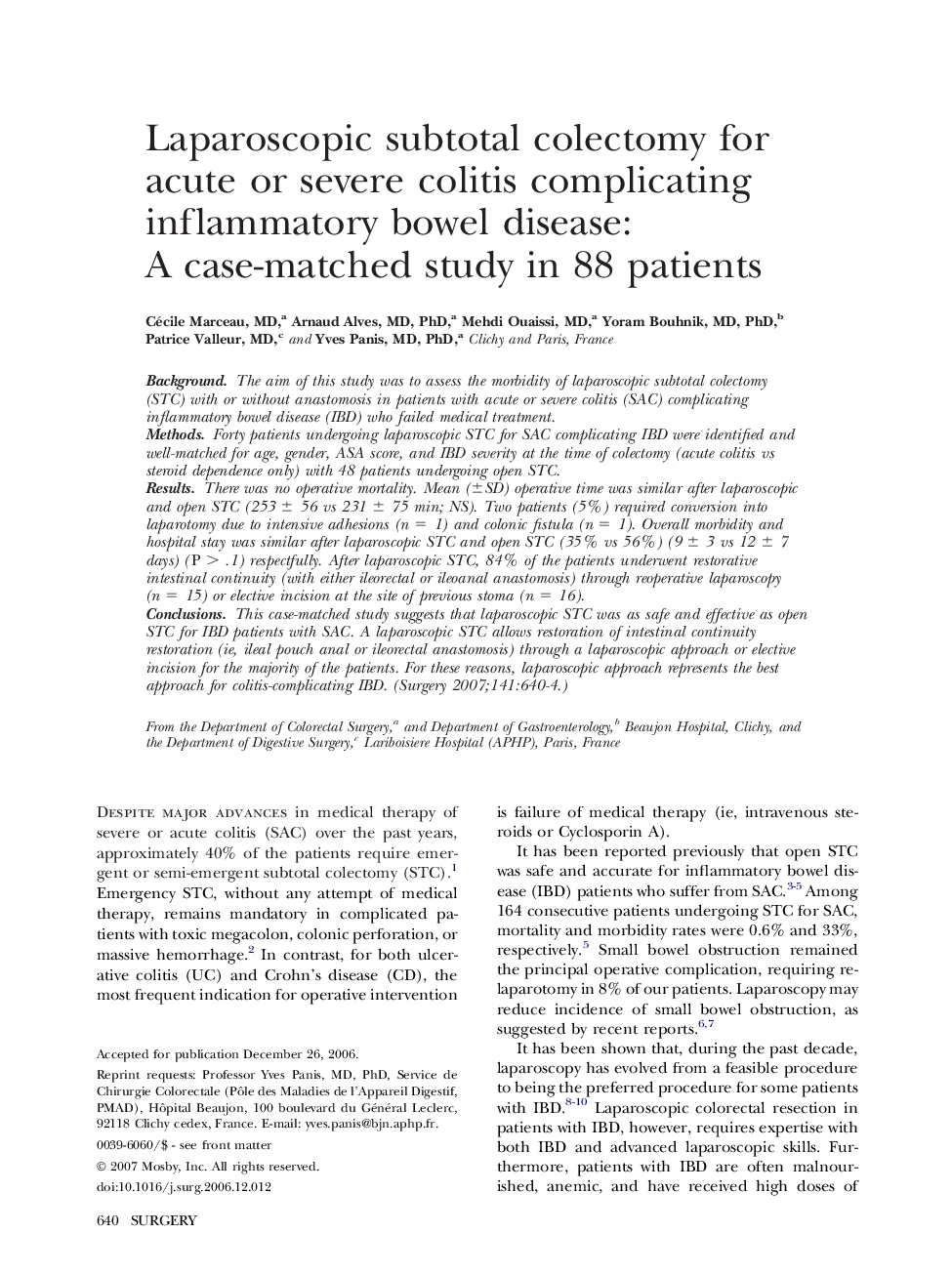| Article ID | Journal | Published Year | Pages | File Type |
|---|---|---|---|---|
| 4309709 | Surgery | 2007 | 5 Pages |
BackgroundThe aim of this study was to assess the morbidity of laparoscopic subtotal colectomy (STC) with or without anastomosis in patients with acute or severe colitis (SAC) complicating inflammatory bowel disease (IBD) who failed medical treatment.MethodsForty patients undergoing laparoscopic STC for SAC complicating IBD were identified and well-matched for age, gender, ASA score, and IBD severity at the time of colectomy (acute colitis vs steroid dependence only) with 48 patients undergoing open STC.ResultsThere was no operative mortality. Mean (±SD) operative time was similar after laparoscopic and open STC (253 ± 56 vs 231 ± 75 min; NS). Two patients (5%) required conversion into laparotomy due to intensive adhesions (n = 1) and colonic fistula (n = 1). Overall morbidity and hospital stay was similar after laparoscopic STC and open STC (35% vs 56%) (9 ± 3 vs 12 ± 7 days) (P > .1) respectfully. After laparoscopic STC, 84% of the patients underwent restorative intestinal continuity (with either ileorectal or ileoanal anastomosis) through reoperative laparoscopy (n = 15) or elective incision at the site of previous stoma (n = 16).ConclusionsThis case-matched study suggests that laparoscopic STC was as safe and effective as open STC for IBD patients with SAC. A laparoscopic STC allows restoration of intestinal continuity restoration (ie, ileal pouch anal or ileorectal anastomosis) through a laparoscopic approach or elective incision for the majority of the patients. For these reasons, laparoscopic approach represents the best approach for colitis-complicating IBD.
